A dawn stroll through the world’s most beautiful gardens feels like pressing your face against the very window of possibility: each landscape proves that imagination, climate, and culture can weave living tapestries far richer than any painter’s palette. From desert blooms that defy logic to Renaissance waterworks that still thunder centuries later, these twenty gardens showcase the planet’s most compelling lessons in design, ecology, and pure joy. Let their stories spark new ideas for your patio pot or community plot, and remember—every great garden started as a single seed waiting for someone to believe in it.
1. Keukenhof Spring Spectacle Garden
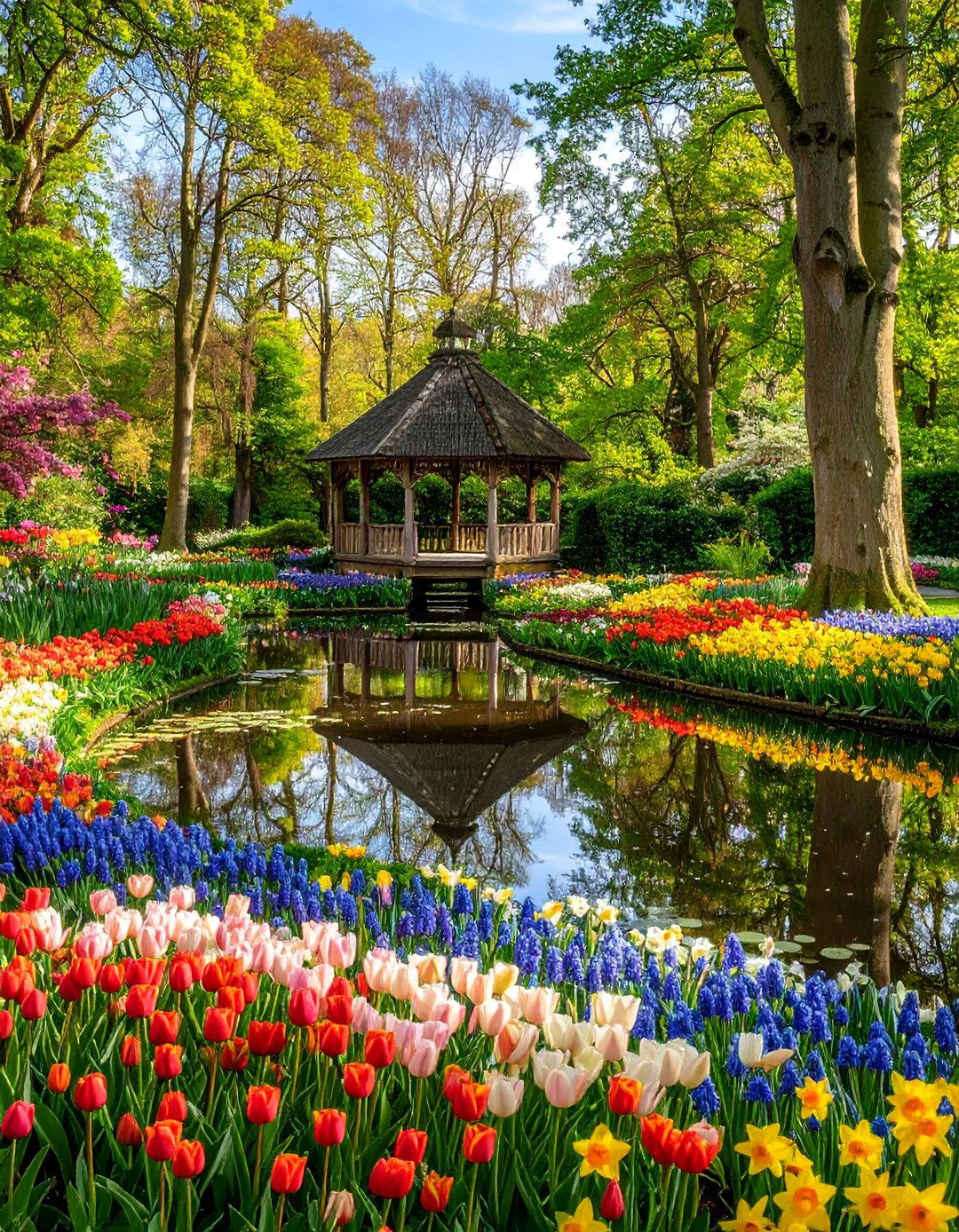
A brisk breeze off the Dutch polders carries the sweet scent of seven million tulips, hyacinths, and daffodils that unfurl at Keukenhof each March; designers plant new bulb mosaics yearly, turning the 32-hectare garden into a temporary rainbow that closes by mid-May, so visitors feel an almost festival-like urgency to savor the color before it fades. A free-flowing layout of meandering paths, quiet ponds, and indoor pavilions means you can duck inside for rare lily shows if the skies darken. To borrow Keukenhof’s magic at home, interplant early, mid, and late-season bulbs—your own plot will echo the park’s rolling waves of bloom.
2. Butchart Gardens’ Storybook Transformation

The moment you descend into the Sunken Garden—once a spent limestone quarry—you grasp how vision can heal scars. Between 1906 and 1929 Jennie Butchart stitched Japanese, Italian, and rose gardens onto Victoria’s rugged coastline, coaxing 900 plant varieties to thrive in a single microclimate. Seasonal bedding schemes keep the five-hectare site fresh: think tulip rivers in spring, more than 2,500 hanging baskets in summer, and a million twinkling lights come December. Reclaiming industrial land at home? Start with vigorous evergreens for backbone, then layer seasonal color the way Butchart’s team still does today.
3. Gardens by the Bay’s Futuristic Oasis
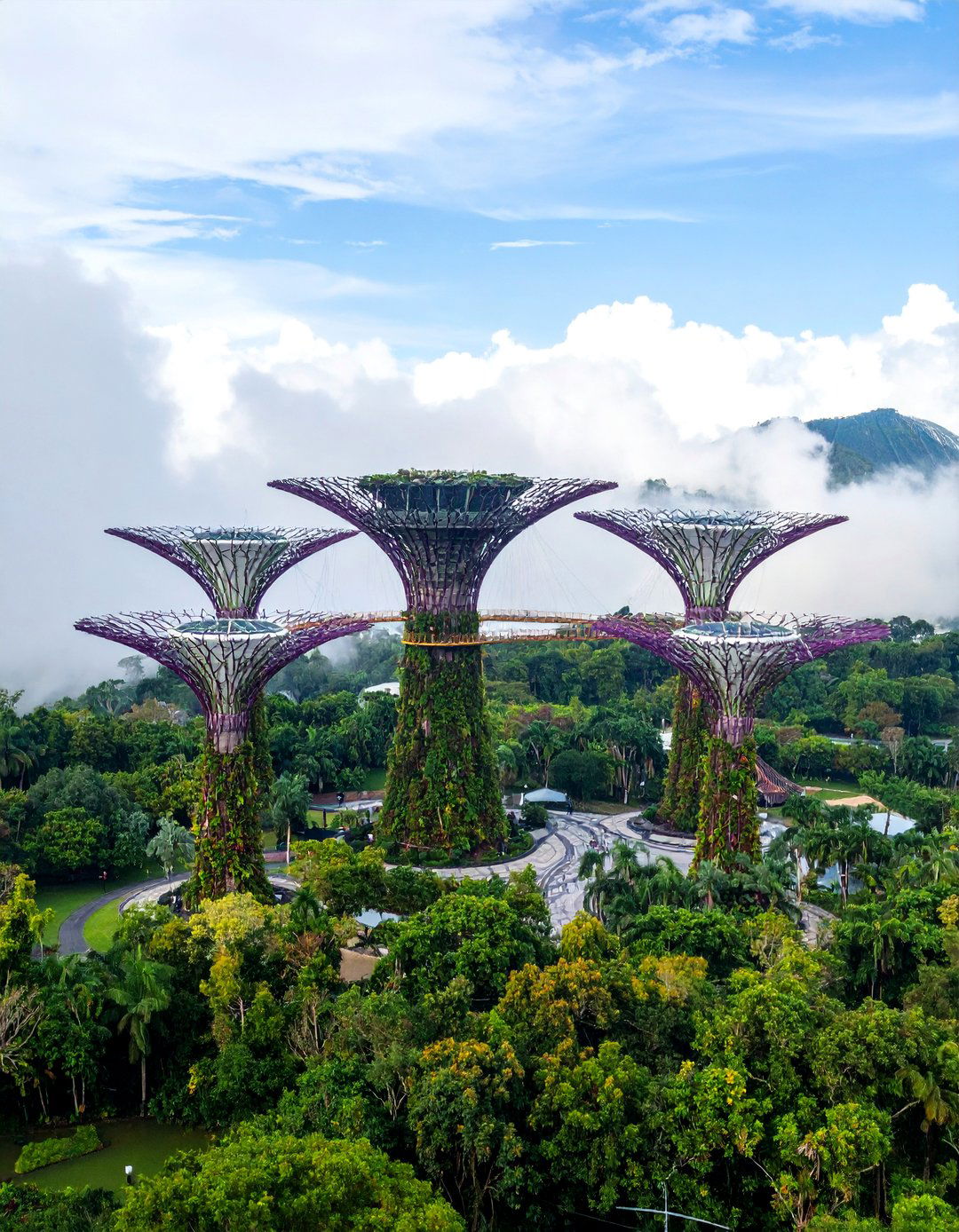
Towering 50-metre Supertrees studded with solar panels rise like botanical cathedrals above Singapore’s waterfront, proving that a garden can be both spectacle and sustainability lab. Biomass burners recycle pruned branches to cool the air-conditioned Cloud Forest dome, while collected rainwater powers the nightly light-and-music show. Native orchids bloom beside arid cacti, inviting visitors to rethink what belongs in the tropics. To mimic its eco-savvy spirit, capture rain in barrels and compost pruning waste—small steps toward self-sufficient greenery.
4. Versailles’ Grand Canal and Sculpted Parterres
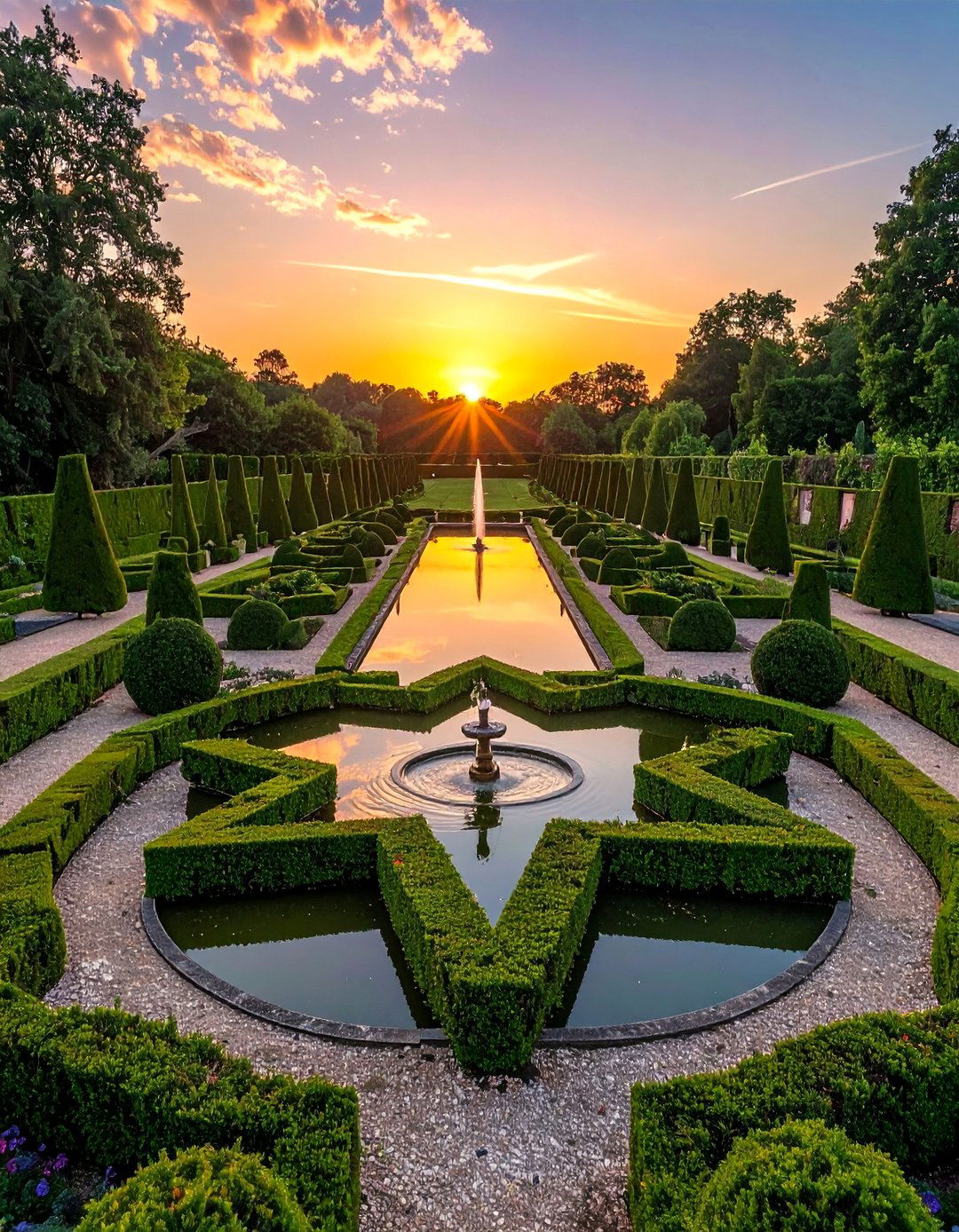
Sweeping down the Hall of Mirrors, you spill into André Le Nôtre’s 17th-century masterwork: 800 hectares of topiary, star-shaped bosquets, and fountains roaring in perfect geometric order. Engineers once rerouted entire rivers to feed the waterworks; today, weekend “Musical Fountains” resurrect that pageantry while the 1.5-kilometre Grand Canal still mirrors sunsets worthy of Louis XIV. At home, borrow Versailles’ illusion-of-infinity trick: frame a straight path with clipped hedges, then end it on a focal urn to pull the eye outward.
5. Kew Gardens’ Living Library
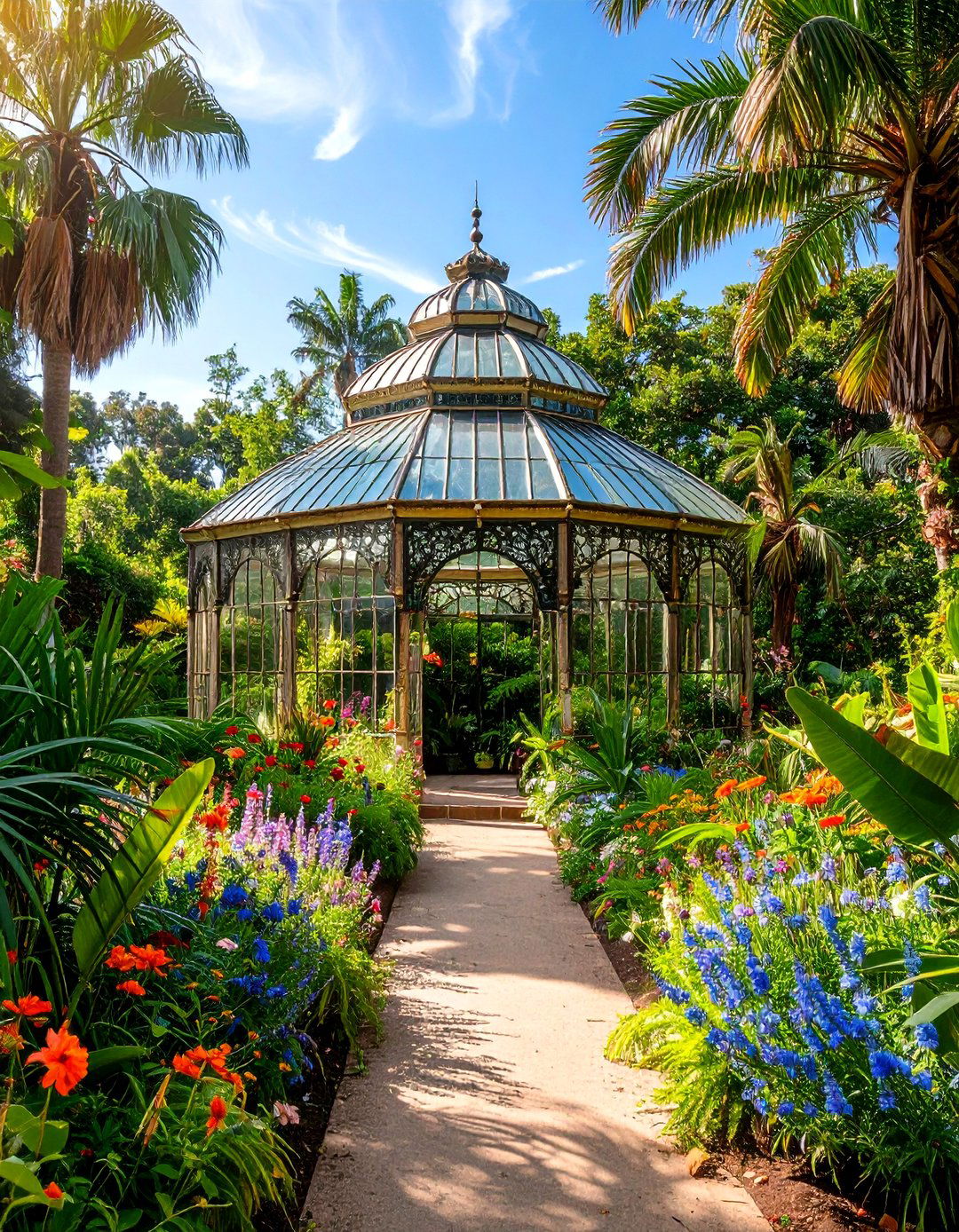
Palm House’s wrought-iron ribs shelter rainforest giants, while the Temperate House—the world’s largest Victorian glasshouse—houses plants extinct in the wild, underscoring Kew’s role as global seed bank and research hub. Stroll from Japanese pagoda to wildflower meadows and you trace 250 years of horticultural fashion in one afternoon. To channel Kew’s spirit, dedicate a corner of your plot to heritage or threatened species; you’ll garden with purpose, not just prettiness.
6. Longwood Gardens’ Fountain Fantasia
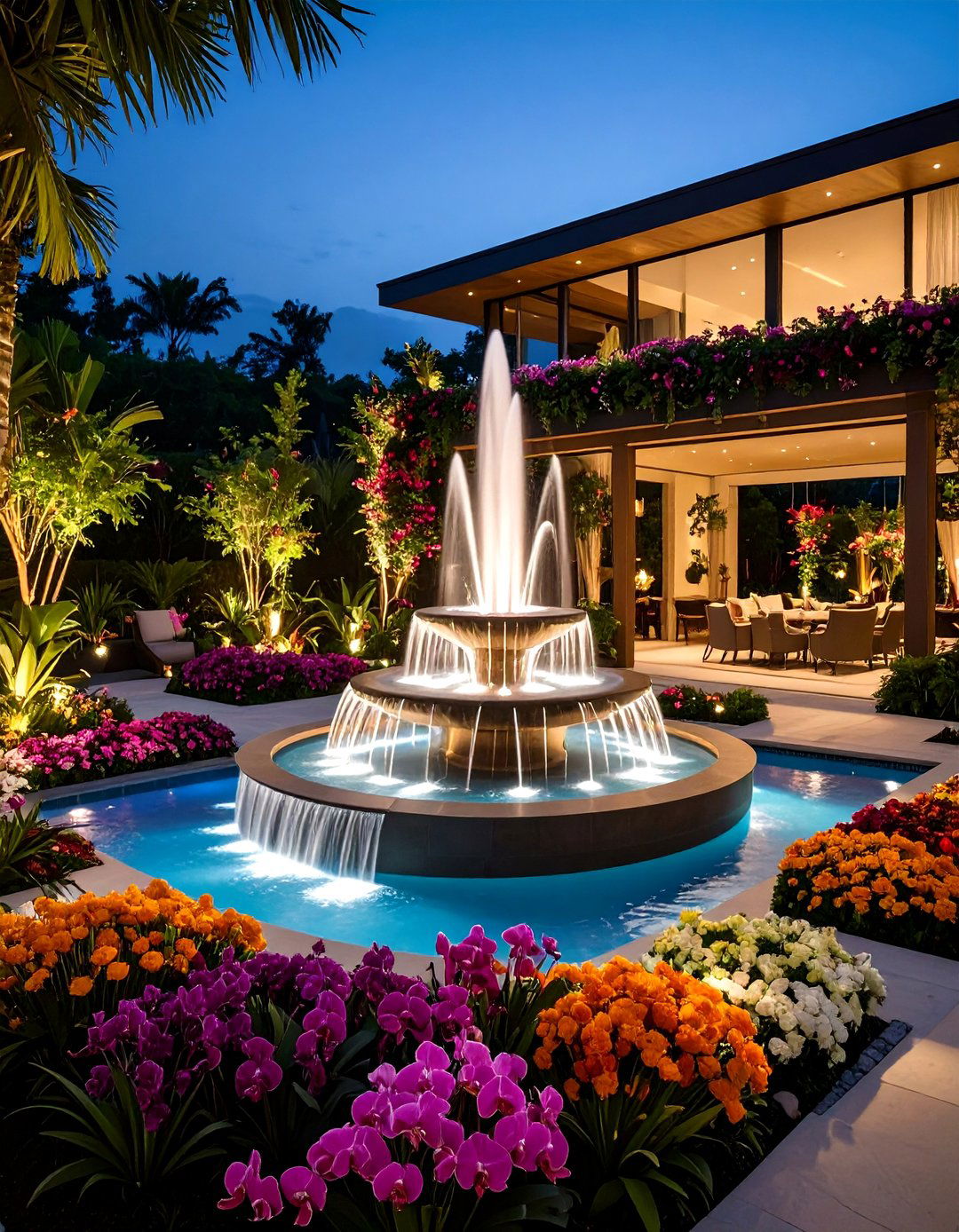
Sun-lit jets soar 55 metres above Pennsylvania farm fields during Longwood’s summer Festival of Fountains, choreographed to music four times daily. Inside, a four-acre conservatory drapes orchids from vaulted ceilings while 10,000 outdoor chrysanthemums form intricate autumn displays. Founder Pierre du Pont believed spectacle should fund stewardship—ticket revenue still bankrolls plant conservation and stellar training programs. Home gardeners can emulate Longwood by planting fragrance near seating and spotlighting it with night-lighting for after-dusk drama.
7. Dubai Miracle Garden’s Desert Bloom

Surreal heart tunnels, a life-size Airbus A380, and a Smurfs Village—all built from 150 million blossoms—prove that even arid dunes can explode with color. Open each cool-season from November to May, the 72,000-square-metre attraction holds multiple Guinness records, including largest floral sculpture. Drip irrigation fed by recycled water keeps petunias thriving in 40 °C heat, reminding us that efficient watering, not rainfall totals, defines floral success. Mulch deeply and irrigate at dawn to copy this desert ingenuity.
8. Nong Nooch Tropical Garden’s Living Mosaic
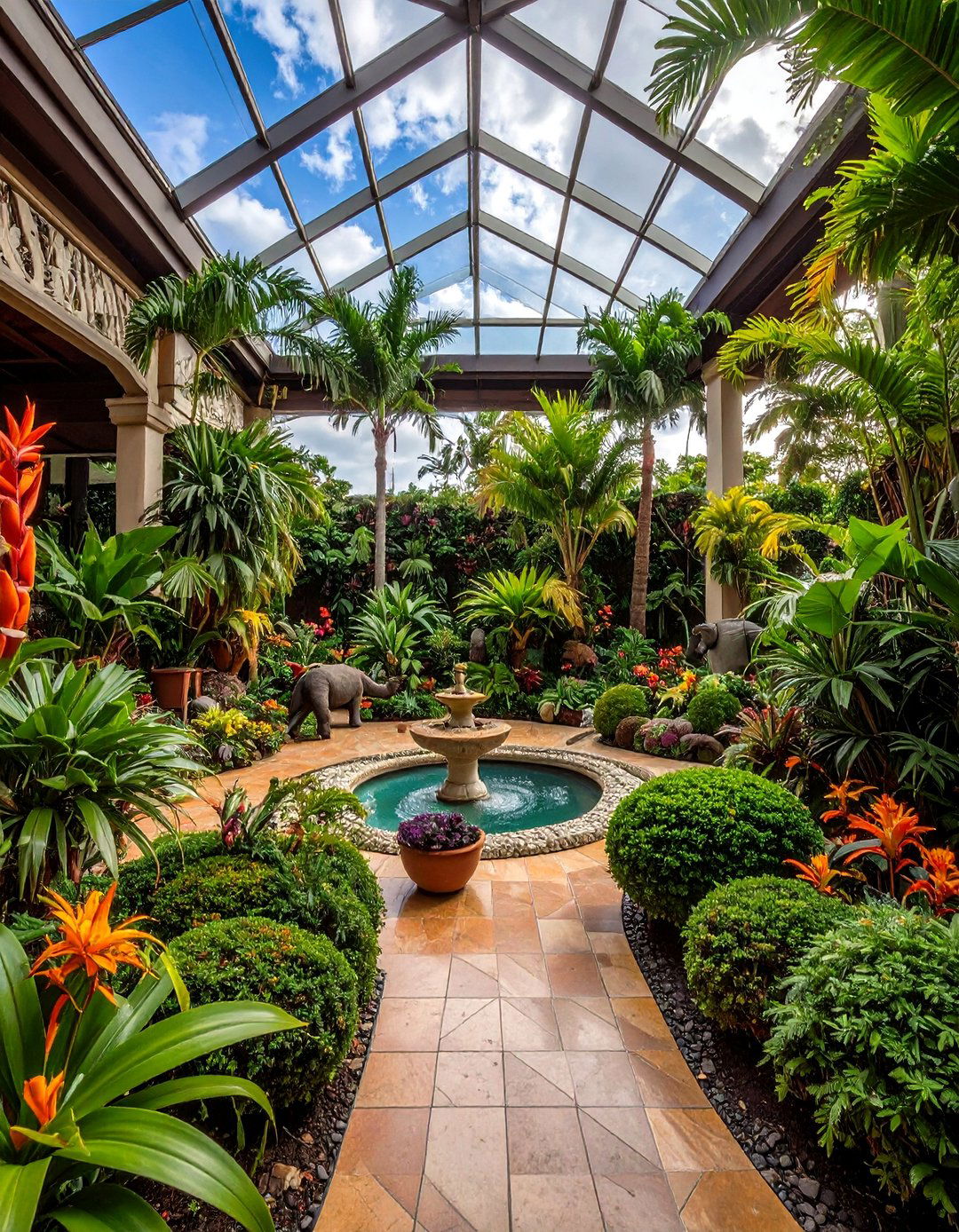
Consider wandering Thai avenues where dinosaur topiaries loom over cycads, formal French parterres meet elephant shows, and a skywalk grants bird-eye views of orchid nurseries. Nong Nooch’s designers mix cultural exhibits—like a ceremonial Thai house—with botanic research plots that safeguard Southeast Asia’s palms and cycads. Mix thematic “rooms” in your own yard: even a small space can pivot from shade fern corner to sun-loving succulent strip with the right transitions.
9. Kirstenbosch’s Fynbos Showcase

Nestled against Table Mountain’s granite buttress, Kirstenbosch protects 528 hectares of Cape Floristic Region biodiversity—over 8,500 plant species, two-thirds endemic. A curving steel “Boomslang” canopy walk lifts you into protea blooms buzzing with sunbirds, while rock aloes ignite winter with torch-orange spears. For water-wise inspiration, study how silver-leafed fynbos thrives on scant rainfall, then choose drought-tolerant natives for your own climate zone.
10. Kenroku-en’s Six Sublimities

In Kanazawa, lantern-lit paths weave past centuries-old pines propped on wooden supports, reflecting Confucian ideals of spaciousness, seclusion, artifice, antiquity, water, and panoramic views—the six attributes of perfect landscape. Visit in February for plum blossoms against snow, or November when gardeners lash straw “yukitsuri” ropes to branches to shed heavy drifts. Translating Kenroku-en’s serenity can be as simple as adding a still pond edged with rocks that blur boundary and reflection.
11. Villa d’Este’s Renaissance Fountains Garden

Imagine wandering Tivoli terraces where more than 500 gravity-powered fountains—including a water-organ that once played madrigals—still splash, cooled by natural spring flow. Cardinals hosted diplomatic banquets here, using hydraulic marvels to dazzle guests long before electricity. Water remains the garden’s heartbeat; even a modest recirculating wall fountain at home can provide similar cooling sound and air movement on summer patios.
12. Humble Administrator’s Garden, Suzhou

Winding covered walks, window-framed vistas, and scholar stones turn this 5.2-hectare Ming-dynasty retreat into a three-dimensional scroll painting. Designers balanced land (yang) and water (yin) so perfectly that UNESCO calls Suzhou’s nine classical gardens “the finest embodiment” of Chinese landscape art. Borrow its scale tricks by placing taller bamboo behind lower pond edges, drawing eyes across layers of height and texture.
13. Jardin Majorelle’s Blue Oasis
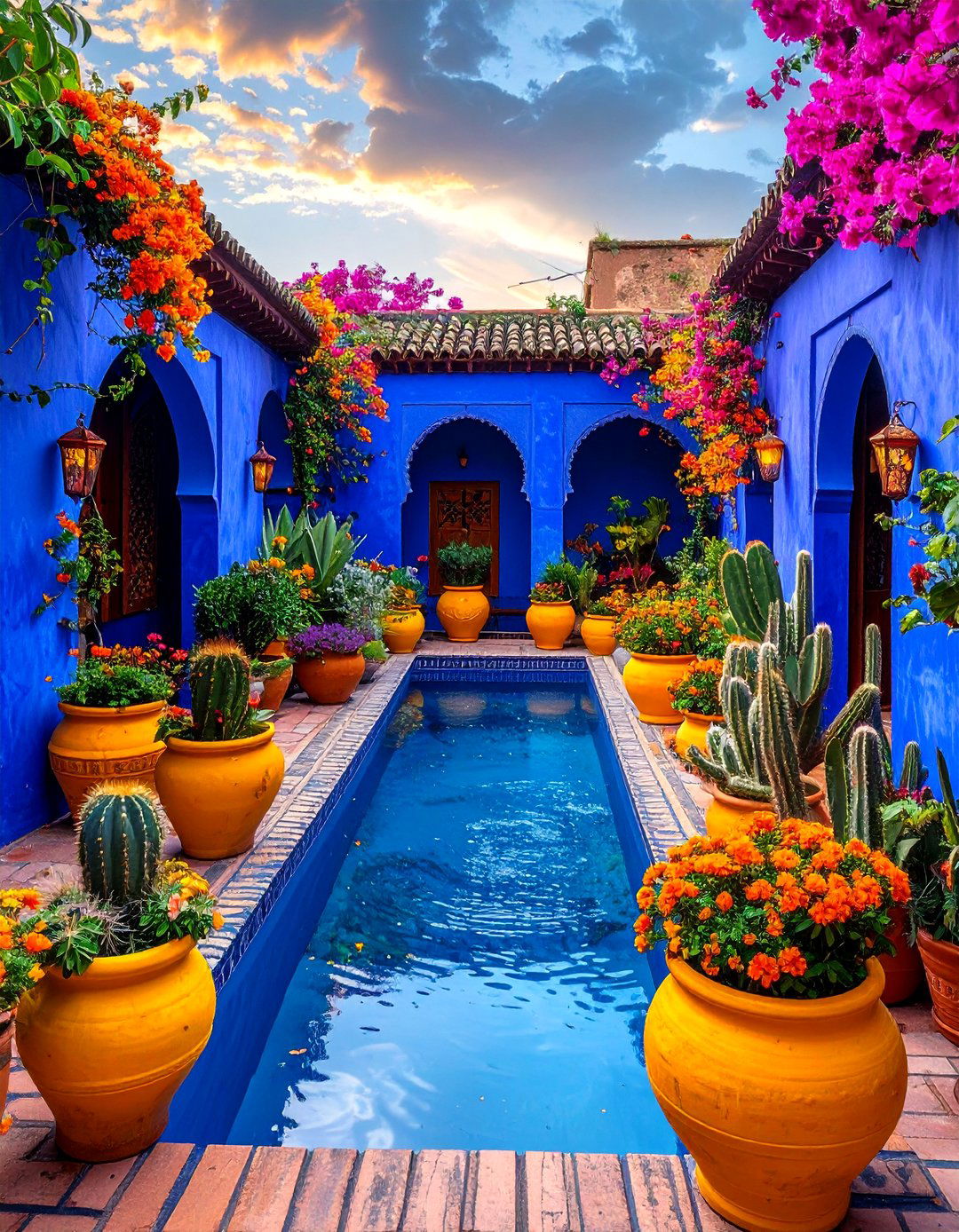
Cobalt walls, lemon pots, and coral bougainvillea create bold color blocks at Jacques Majorelle’s Marrakech hideaway, later restored by Yves Saint Laurent. At just 9,000 m², the garden proves small spaces can make outsized impressions through restrained palettes and contrasting textures—think spiky cacti against smooth water channels. Paint a single wall a daring hue, then echo it with ceramic planters to mimic Majorelle’s punch.
14. Brooklyn Botanic Garden’s Cherry Carnival
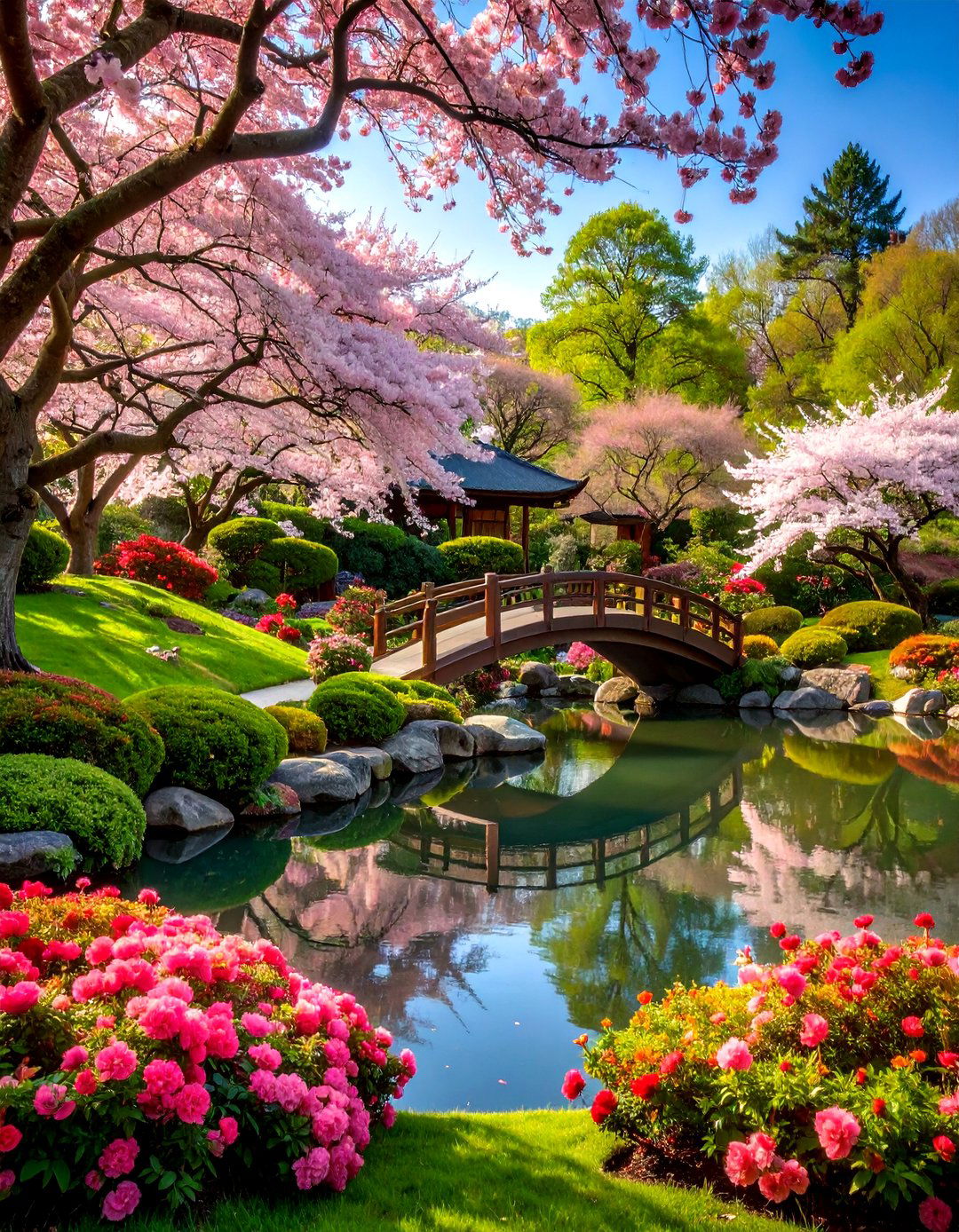
Each April, more than 200 flowering cherries stage a staggered blossom parade around the Japanese Hill-and-Pond, while soils under centuries-old oaks nurse one of North America’s largest rose collections come June. Family programs, from bonsai clinics to kid-led discovery walks, illustrate how public gardens cultivate future stewards. Hosting neighborhood workshops—even informal seed swaps—can sow similar community spirit where you live.
15. Stourhead’s Picturesque Dreamscape
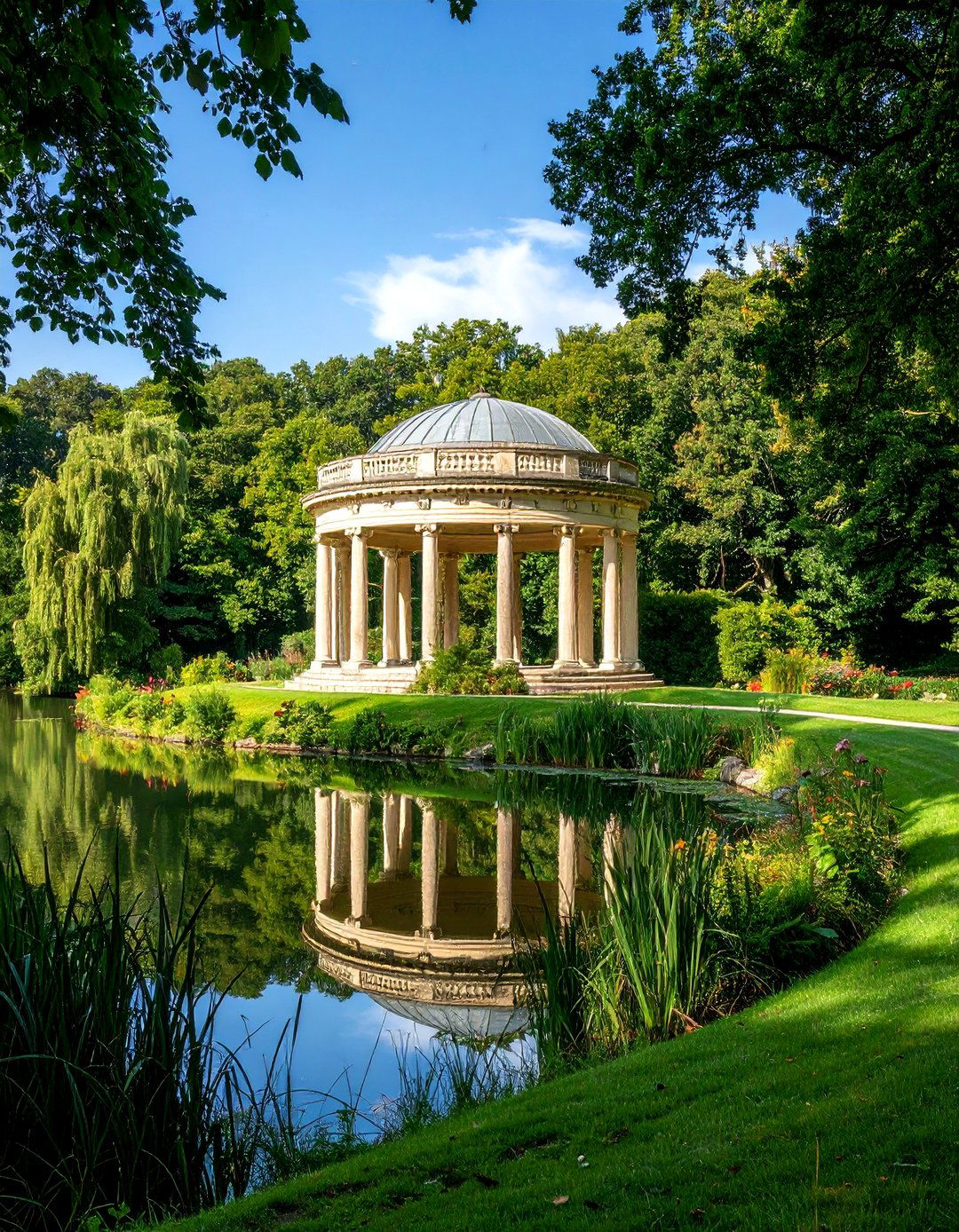
Eighteenth-century banker Henry Hoare sketched landscape paintings before hiring diggers to carve them into Wiltshire hills; today, you still round a bend to see the Pantheon mirrored in a lake, or duck into a grotto where water nymphs whisper over springs. The secret is borrowed scenery: Hoare framed distant woodlands with nearer shrubs. Replicate the trick—place tall evergreens at the back of a border to “borrow” skyline trees beyond your fence.
16. Powerscourt Gardens’ Mountain Vistas

Terraced Italian steps cascade toward Triton Lake, reflecting Sugarloaf Mountain like a living postcard. Rated among National Geographic’s top three gardens, Powerscourt also hides a Japanese valley of maples and moss, plus Ireland’s tallest waterfall nearby. Designers exploited elevation changes; if your yard slopes, carve gentle terraces rather than fighting gravity, and each level becomes its own outdoor room.
17. Giardino di Ninfa’s Romantic Ruins

Roses climb medieval walls, while rare gunneras unfurl elephant-ear leaves beside crystal streams in this “most romantic garden in the world,” created among the ruins of a 14th-century town. High water table and a subtropical microclimate let magnolias bloom alongside Himalayan dogwoods—an object lesson in matching plant to site rather than forcing conditions. Map your garden’s wet patches, then select moisture lovers to thrive, not struggle.
18. Monet’s Water-Lily Garden, Giverny
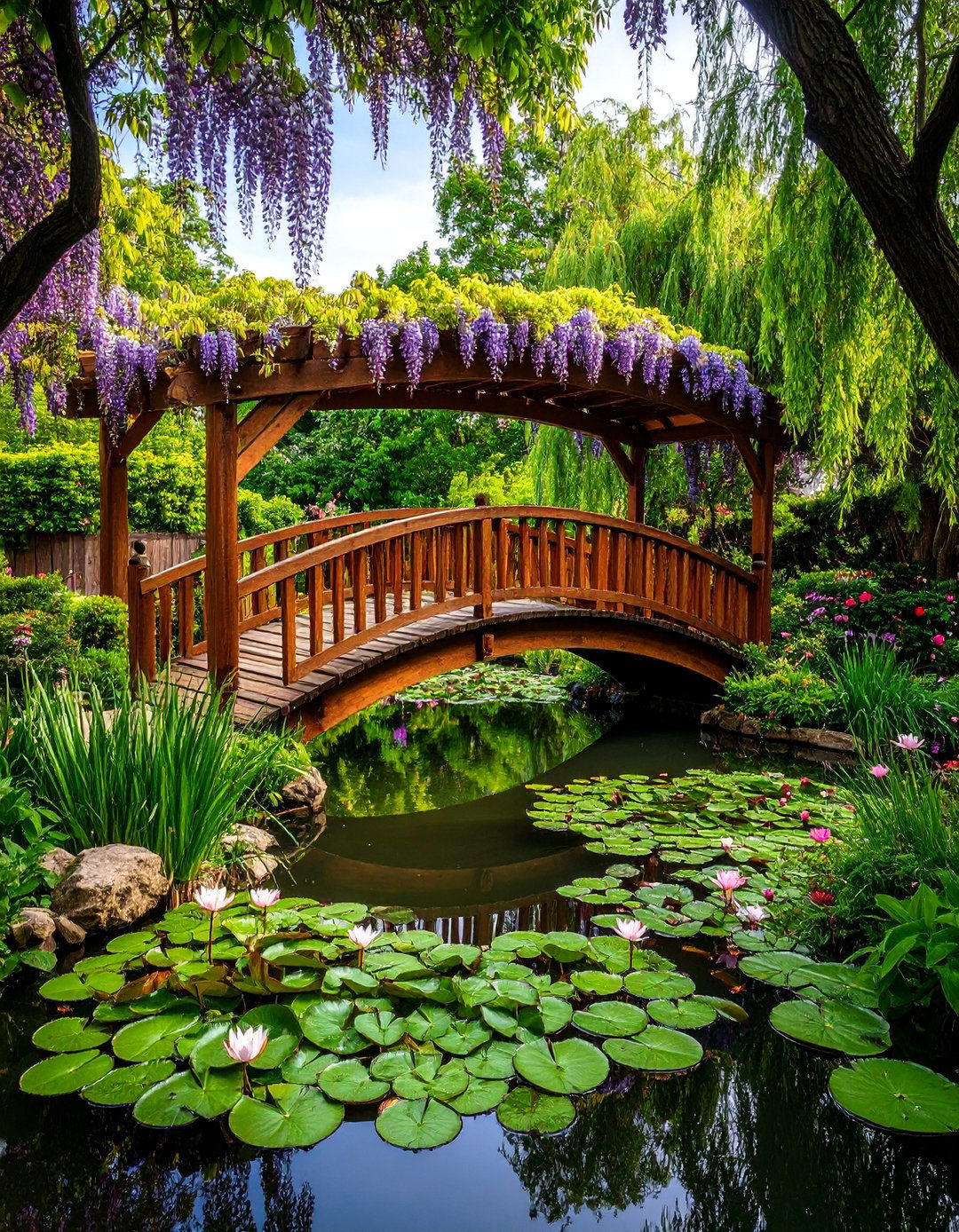
Stepping onto the Japanese bridge, you stand inside an Impressionist brushstroke: wisteria drips overhead; blush-pink water lilies open at noon; willow fronds ripple in mirrored greens. Monet spent his art profits on exotic cultivars, then painted them until cataracts blurred edges into color fields. The lesson? Design with an artist’s eye—choose a limited palette, then repeat shapes to create harmony your camera will love.
19. Mount Stewart’s Rhododendron Forest Garden
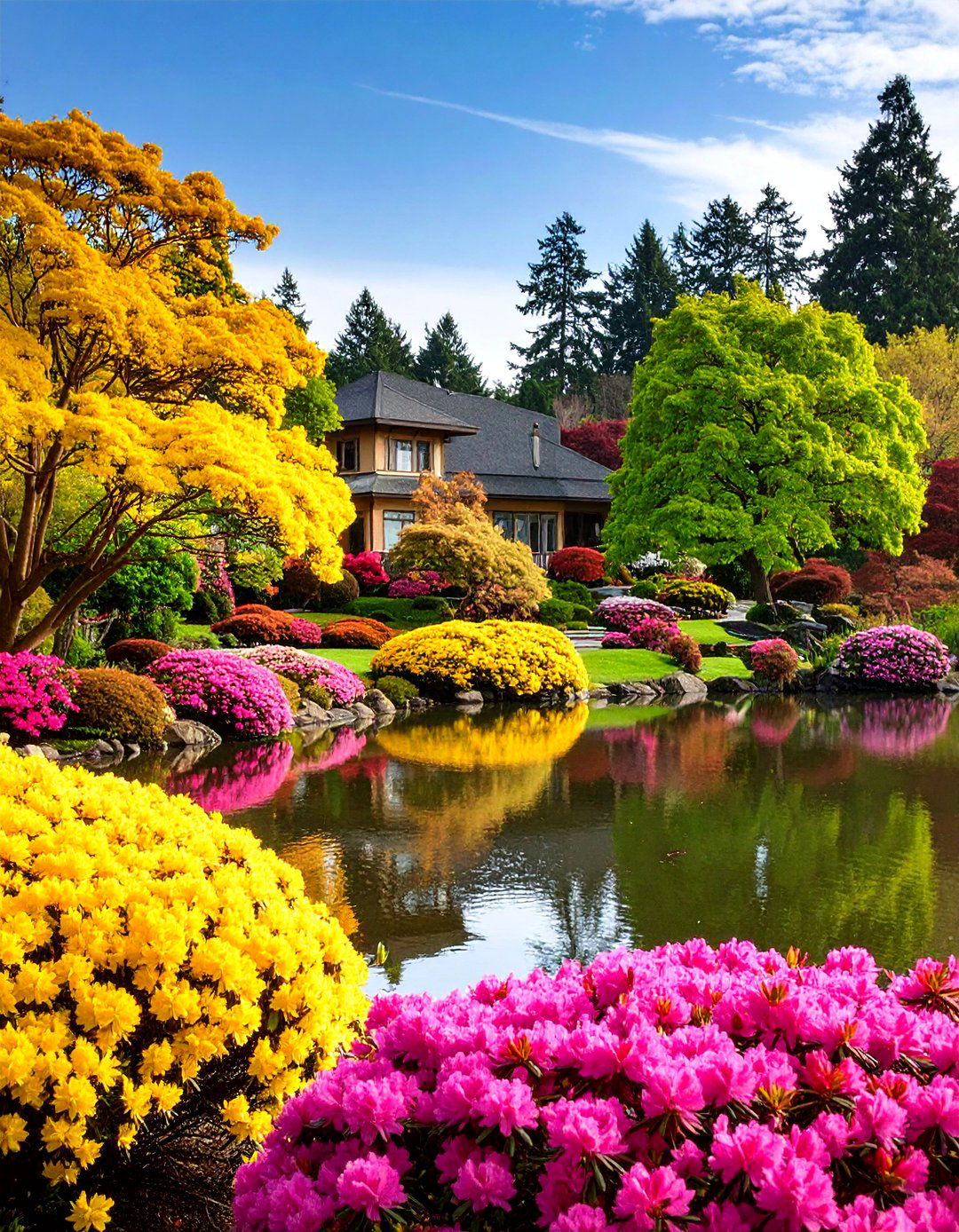
On Northern Ireland’s mild Ards Peninsula, rhododendrons tower like trees, exploding in May with sunsets of yellow, magenta, and flame. Lady Edith Vane-Tempest-Stewart traded seeds worldwide, weaving Himalayan lilies and Chilean flame trees into themed “world gardens” around a lake. Diversity equals resilience: adopt her curiosity by trial-planting one unfamiliar species each season to broaden your garden’s genetic base.
20. Huntington Botanical Gardens’ Expanding Chinese Treasure

San Marino’s Huntington recently expanded its classical Chinese garden to 12 acres, debuting a medicinal plot and star-gazing tower that frame San Gabriel Mountain views. The project illustrates cultural dialogue through plants, pairing scholar rocks with Southern California flora without pastiche. Seek similar authenticity: research design principles of any style you emulate, ensuring plant choices and hardscape honor the tradition rather than merely imitating its look.
Conclusion:
These living masterpieces prove one simple truth: every climate, budget, and footprint has a brilliant garden waiting to emerge when creativity meets ecological respect. Whether you borrow Versailles’ symmetry, Kenroku-en’s contemplative calm, or Dubai’s audacious abundance, let each visit inspire you to craft personal spaces that nurture pollinators, neighbors, and your own sense of wonder. Plant boldly, tend patiently, and you, too, will harvest beauty measured not just in blossoms but in the countless moments of joy they spark.


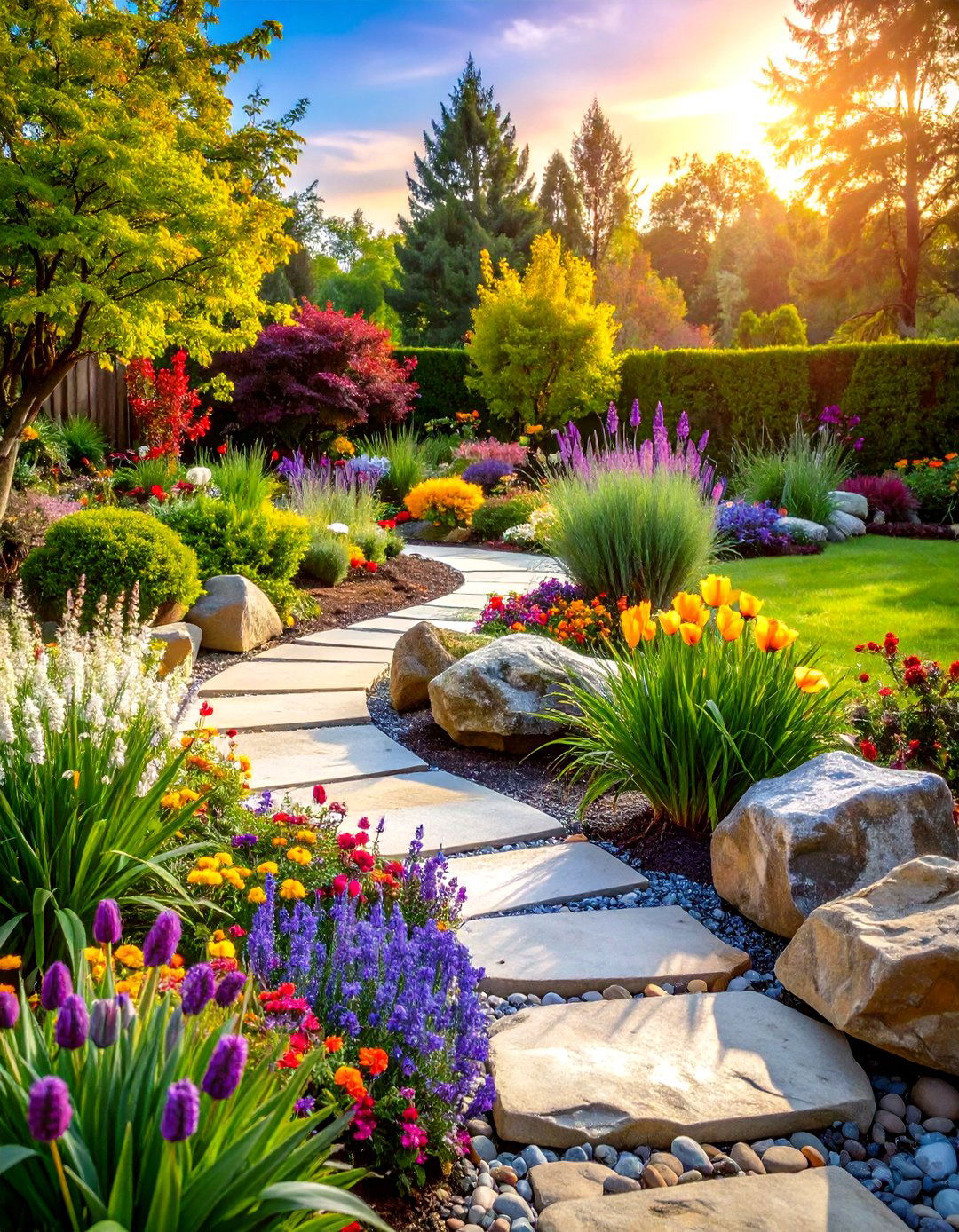
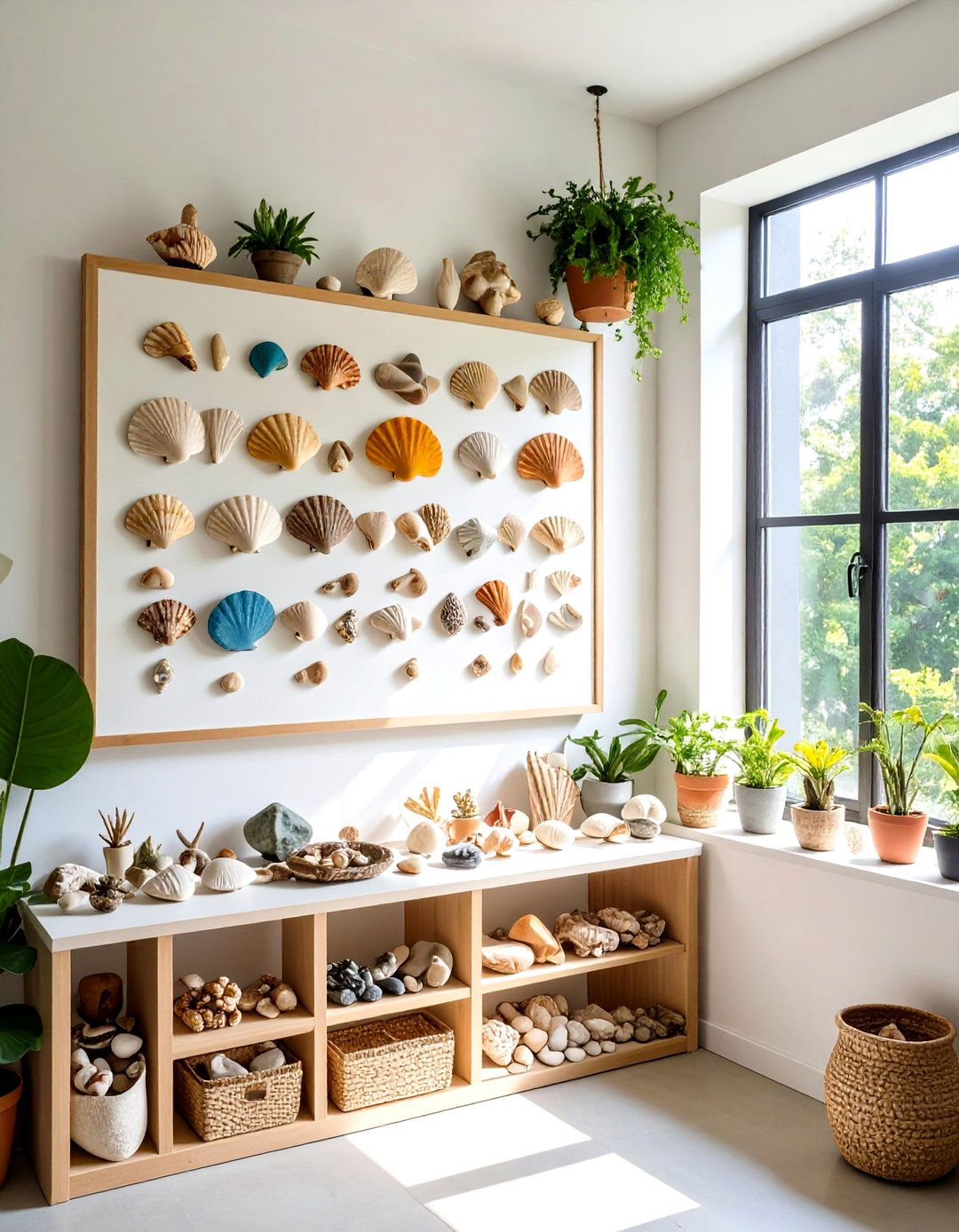
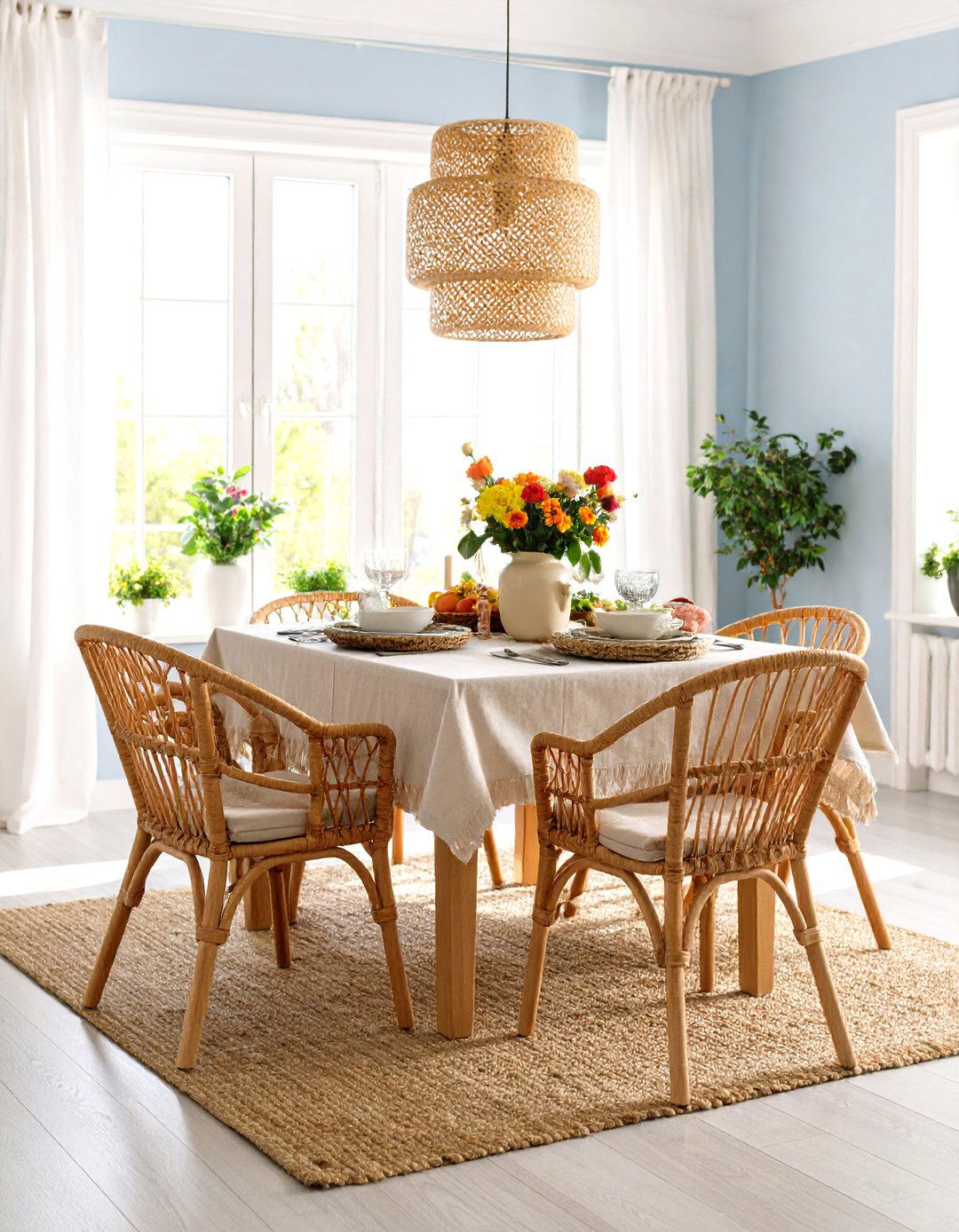
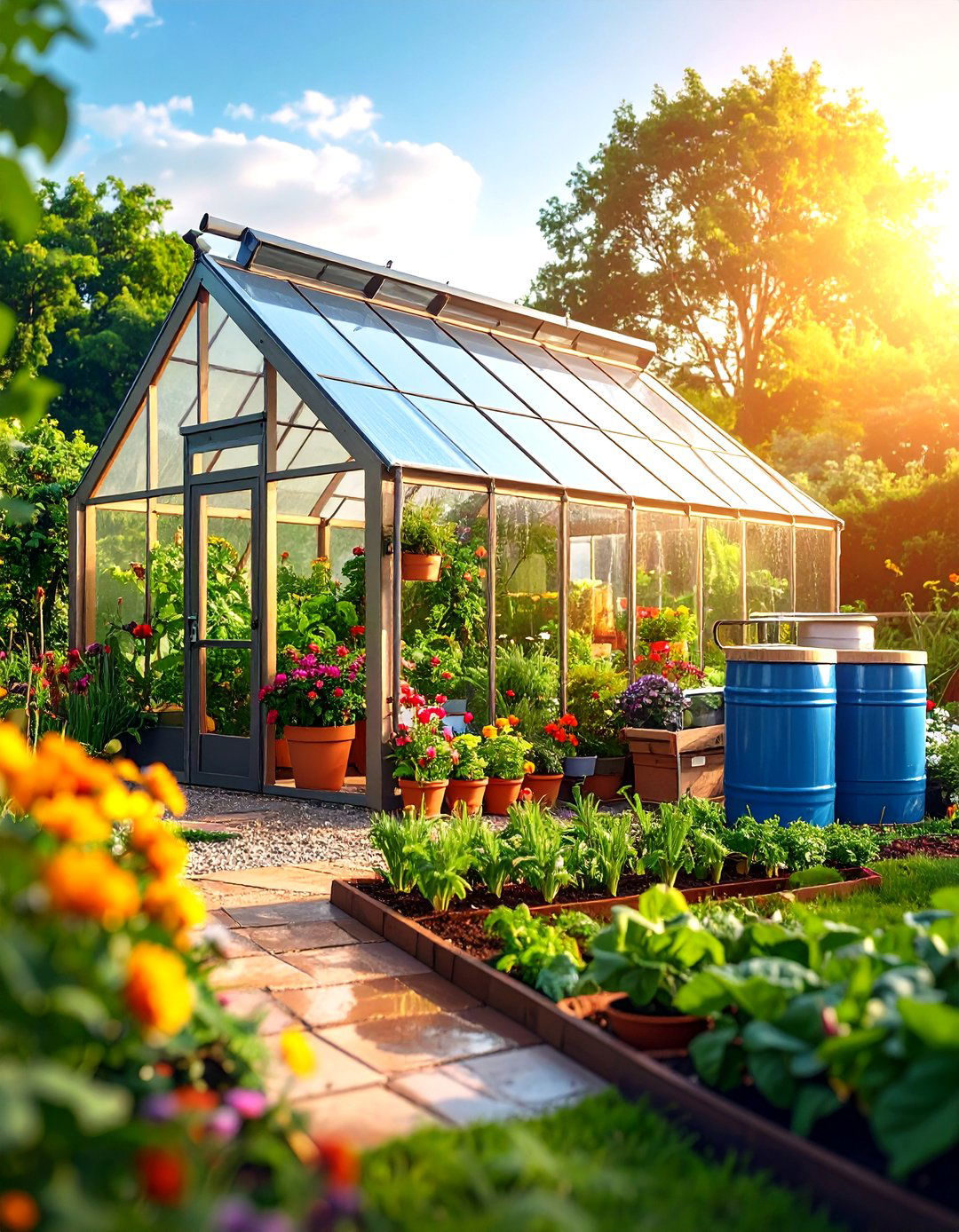

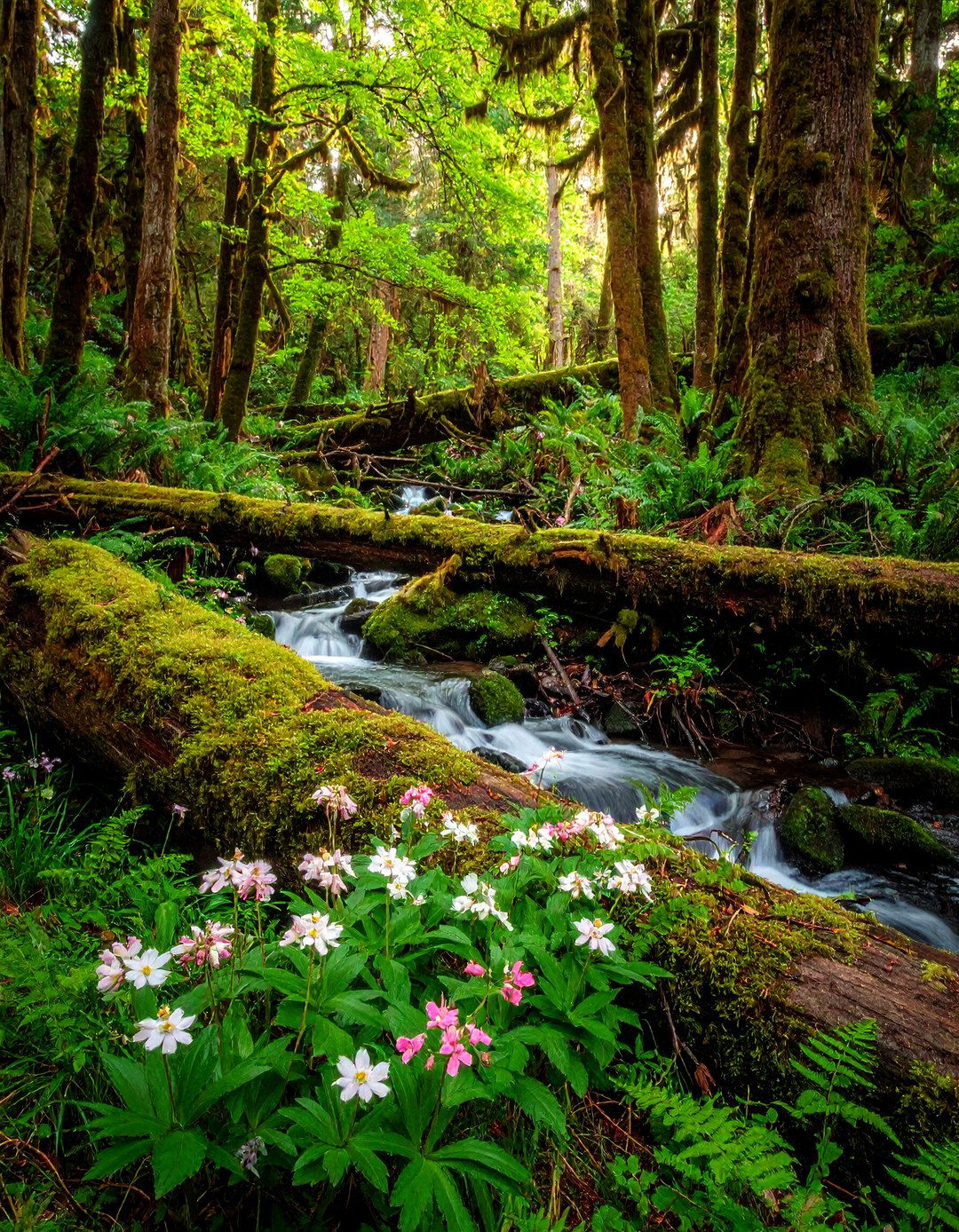


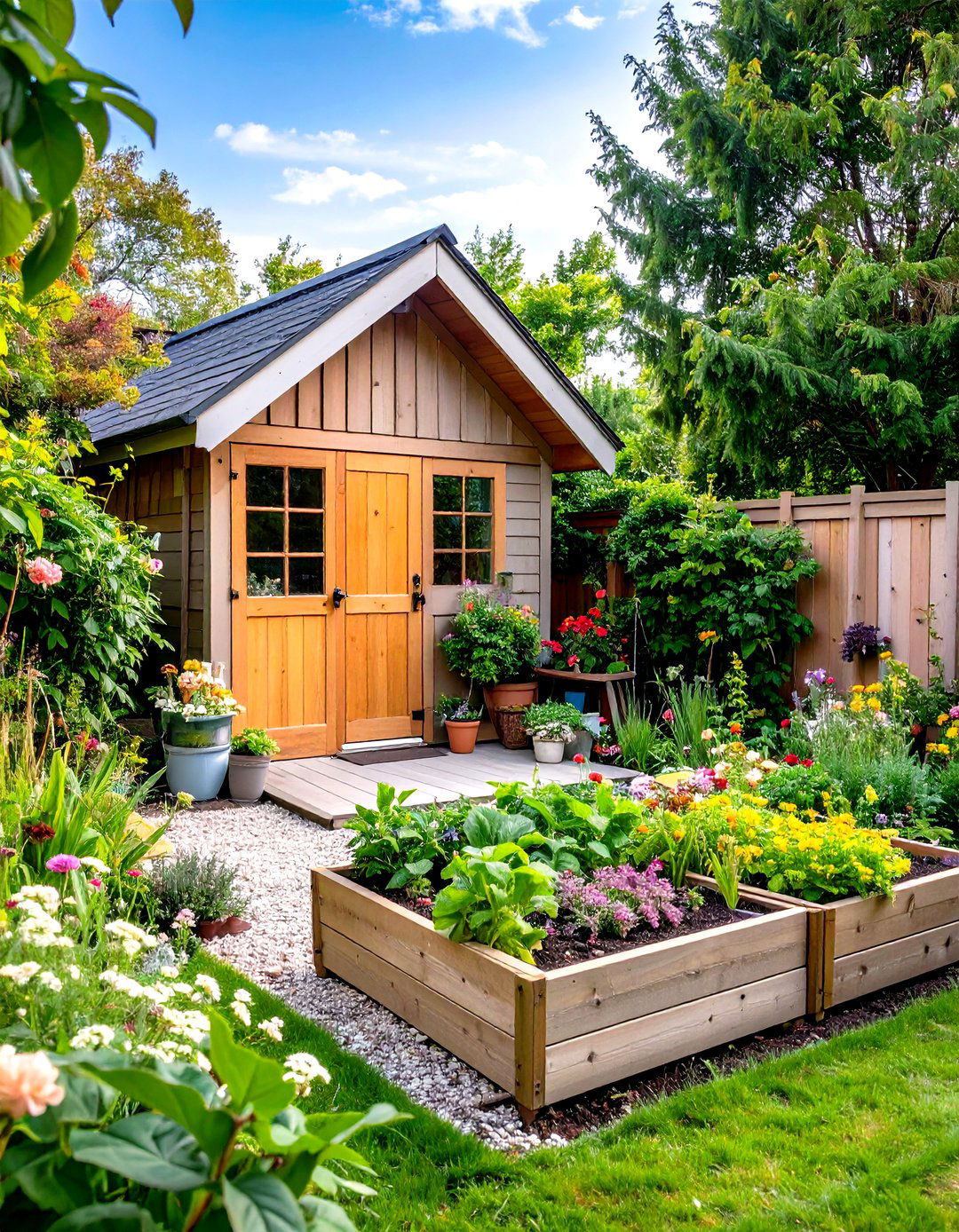
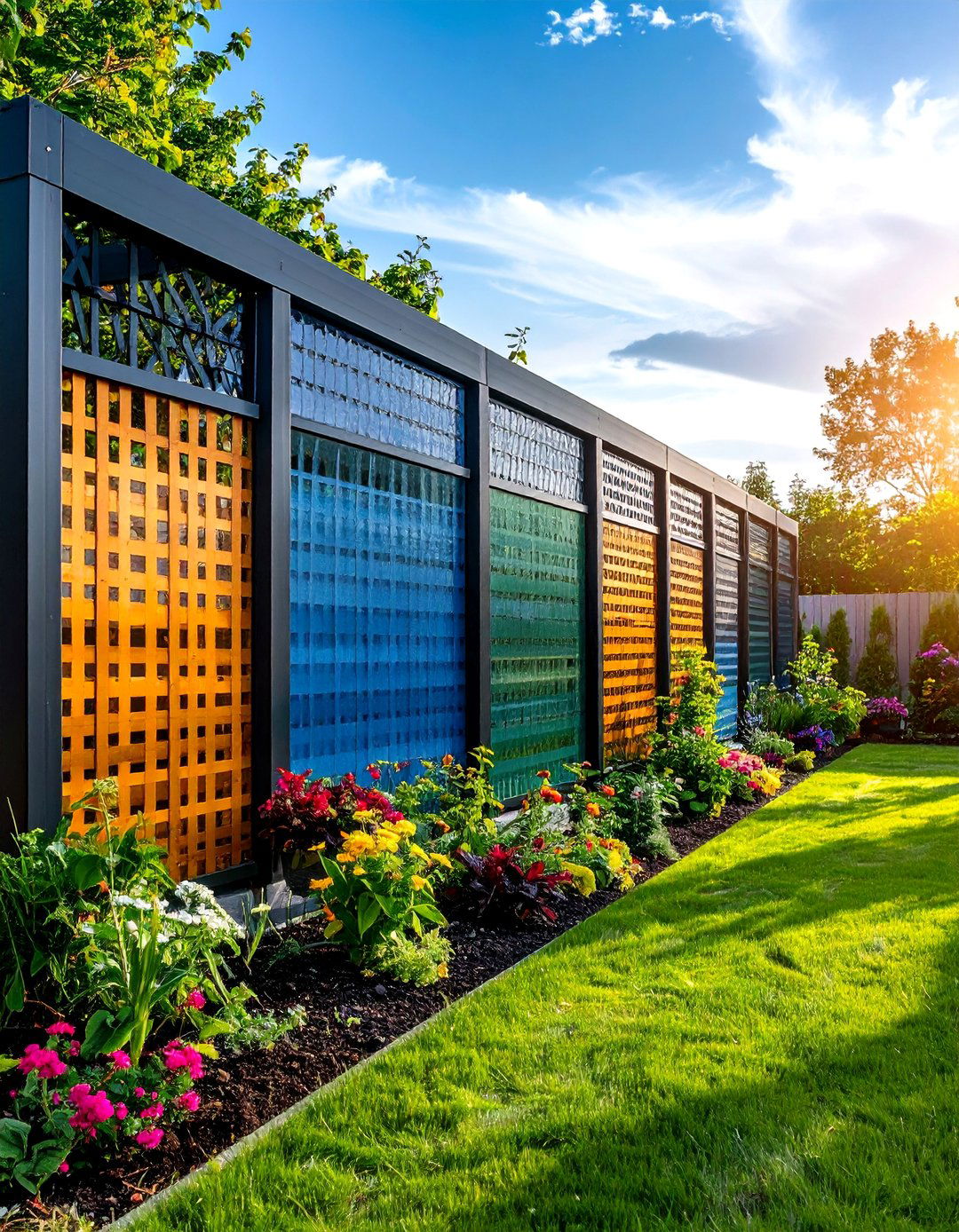

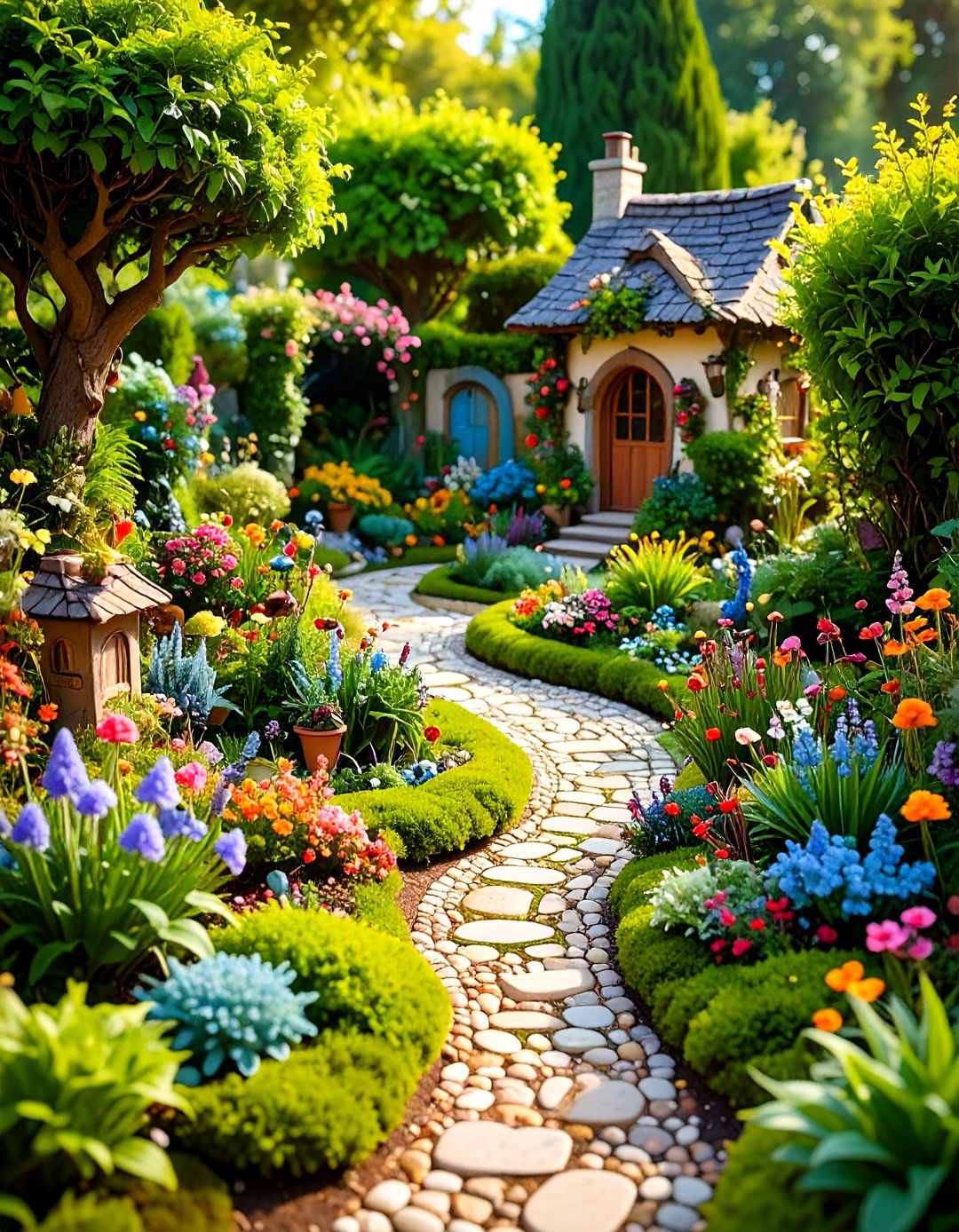


Leave a Reply